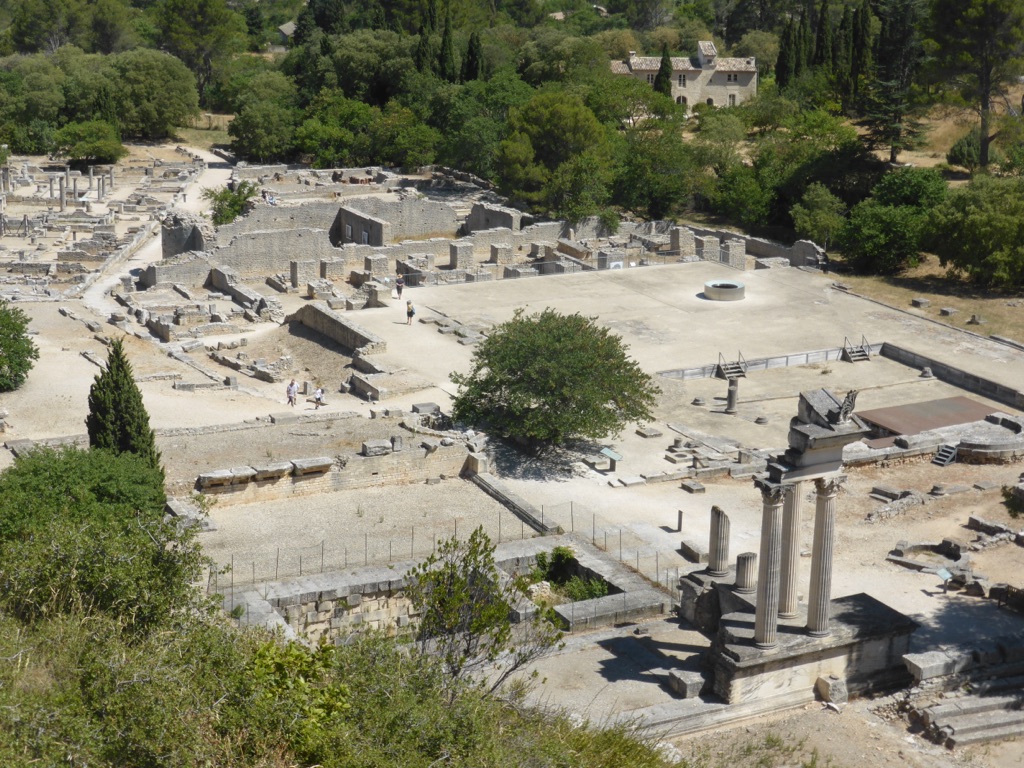Glanum was an ancient city near present-day Saint-Rémy-de-Provence in southern France. Founded by a Celto-Ligurian people known as the Salyens in the 6th century BCE, it became a prosperous city under Greek influence. Later, it flourished under Roman rule before being abandoned after the fall of the Roman Empire. Today, it’s renowned for its well-preserved ruins, including a triumphal arch, a mausoleum, and extensive residential areas that offer a glimpse into the past.
Get your dose of History via Email
Historical Background of Glanum
Discovered in the 1920s, Glanum’s excavation began under the direction of archaeologist Jules Formigé. The city’s origins trace back to the 6th century BCE, built by the Salyens. It was later Hellenized by Greek colonists from Phocaea and eventually became a Roman city. Glanum was known for its healing springs, which attracted many visitors. It was abandoned in the 3rd century CE, possibly due to Germanic invasions.
The city’s builders, the Salyens, were a Celto-Ligurian tribe. They chose the location for its strategic and commercial advantages. The Greeks, and later the Romans, expanded the city, leaving behind a rich architectural legacy. Glanum’s layout and design reflect a blend of these cultural influences.
Throughout its history, Glanum was inhabited by various groups. After the Romans left, the site was forgotten and only rediscovered in modern times. Its ruins provide valuable insights into the lives of its ancient inhabitants.
Glanum was not the scene of any famous historical events. However, its architectural remains, like the triumphal arch and mausoleum, are significant. They are some of the oldest of their kind in France and symbolize the city’s past grandeur.
The city’s rediscovery and excavation have been pivotal in understanding Gallo-Roman culture in the region. The site continues to be a focus for archaeological research, revealing more about its complex history.
About Glanum
Glanum’s ruins showcase a mix of Greek and Roman architecture. The city was built using local limestone, known for its durability. The site includes residential areas, public baths, a forum, and temples, all arranged around a central street.
The most notable structures are the triumphal arch and the mausoleum, standing at the entrance of the city. The arch is a fine example of Roman architecture, while the mausoleum, known as the Mausoleum of the Julii, displays intricate carvings depicting Roman and Gaulish themes.
Architectural highlights include the remains of a market, the curia, and various temples dedicated to Roman gods. The city’s design reflects the Roman grid plan, with streets intersecting at right angles.
The residential quarters of Glanum reveal much about daily life in the city. Houses were equipped with water systems and decorated with mosaics and frescoes, indicating a high standard of living.
Excavations have uncovered artifacts such as pottery, coins, and tools, providing a deeper understanding of the city’s economy and culture. The preservation of these materials has been exceptional, thanks to the dry Mediterranean climate.
Theories and Interpretations
Several theories exist about Glanum’s use and significance. Its healing springs suggest it was a place of pilgrimage and healing, akin to a spa town. The presence of temples indicates religious importance.
Mysteries surround Glanum, particularly regarding the exact nature of its decline and abandonment. Some speculate that the invasion of Germanic tribes led to its downfall, while others suggest a decline in the importance of its springs.
Interpretations of Glanum’s ruins are informed by historical records from the Roman period. Inscriptions and carvings provide clues to its past, though much remains open to interpretation.
Dating of the site has been carried out using methods such as stratigraphy and radiocarbon dating. These have helped establish a timeline for the city’s development and decline.
Despite ongoing research, Glanum retains an air of mystery. Its full story is yet to be uncovered, inviting scholars and visitors alike to ponder its history.
At a glance
Country: France
Civilization: Celto-Ligurian (Salyens), Greek, Roman
Age: Founded in the 6th century BCE, abandoned in the 3rd century CE
Conclusion and Sources
Information for this article was sourced from:

